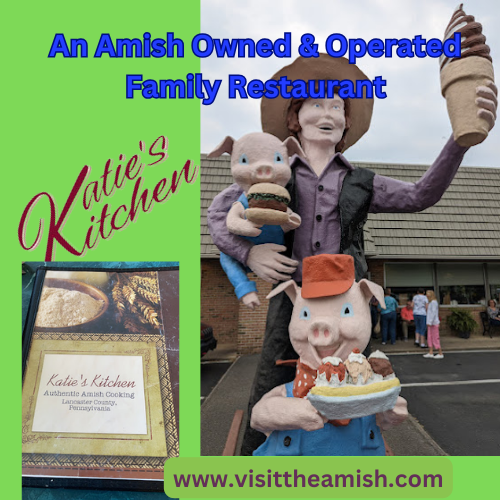Exploring Amish Craftsmanship: A Journey through Riegsecker Marketplace
Nestled within the picturesque landscapes of Shipshewana, Indiana, lies a treasure trove of Amish craftsmanship and culture: Riegsecker Marketplace. Far from just a typical shopping destination, Riegsecker Marketplace stands as a testament to the rich heritage and artisanal skill that define the Amish way of life.
A Glimpse into Amish Tradition
Stepping into Riegsecker Marketplace is akin to stepping into a world where time seems to slow down, and craftsmanship reigns supreme. As you wander through the marketplace, you’re greeted by the sight of meticulously crafted furniture, intricate quilts, and an array of handcrafted goods that showcase the talent and dedication of Amish artisans.
Unraveling the Story Behind Each Piece
Every item within Riegsecker Marketplace tells a story—a story of tradition, craftsmanship, and heritage. From the beautifully carved wooden furniture to the intricate patterns adorning the handmade quilts, each piece is imbued with the essence of Amish culture and tradition.
Take, for example, the meticulously crafted Amish furniture that graces the showroom floors. Each piece is a labor of love, crafted by skilled artisans using time-honored techniques passed down through generations. Whether it’s a handcrafted dining table or a intricately carved rocking chair, every piece reflects the commitment to quality and craftsmanship that defines Amish woodworking.
Similarly, the quilts on display at Riegsecker Marketplace are a sight to behold. Each quilt tells a story through its vibrant colors and intricate patterns, with every stitch serving as a testament to the skill and artistry of the Amish quilters who create them. From traditional patchwork designs to more modern interpretations, the quilts showcase the rich tradition of quilting that has been a hallmark of Amish culture for centuries.
Beyond Shopping: A Cultural Experience
But Riegsecker Marketplace offers more than just shopping—it’s a cultural experience unlike any other. As you browse through the marketplace, you have the opportunity to interact with the artisans themselves, gaining insight into their craft and learning about the traditions that shape their work.
Additionally, Riegsecker Marketplace hosts a variety of events and demonstrations that further immerse visitors in Amish culture. From woodworking demonstrations to quilting workshops, these events offer a firsthand glimpse into the craftsmanship and traditions that define the Amish way of life.
Preserving Tradition in a Modern World
In an age marked by mass production and disposable goods, Riegsecker Marketplace stands as a beacon of tradition and authenticity. By preserving and showcasing the craftsmanship of the Amish community, the marketplace not only celebrates a rich cultural heritage but also provides a platform for artisans to share their craft with the world.
Moreover, Riegsecker Marketplace plays a vital role in supporting the local Amish community, providing artisans with a venue to sell their wares and sustain their traditional way of life. In doing so, the marketplace helps to ensure that these time-honored skills and traditions are passed down to future generations, keeping the spirit of Amish craftsmanship alive for years to come.
In a world that often seems overrun by mass-produced goods and fleeting trends, Riegsecker Marketplace stands as a testament to the enduring value of tradition and craftsmanship. Through its dedication to preserving and showcasing the talents of the Amish community, the marketplace offers visitors a glimpse into a world where quality and authenticity reign supreme. So, the next time you find yourself in Shipshewana, be sure to pay a visit to Riegsecker Marketplace—you’ll not only discover a treasure trove of handcrafted goods but also experience the rich cultural heritage of the Amish community firsthand.
Riegsecker Marketplace is a renowned shopping destination located in Shipshewana, Indiana, known for its vast array of high-quality Amish-made products and crafts. Situated in the heart of Indiana’s Amish country, Riegsecker Marketplace offers visitors a unique opportunity to immerse themselves in the rich cultural heritage and craftsmanship of the local Amish community.
History and Background
Founded by the Riegsecker family, the marketplace has humble roots dating back to its establishment in the 1970s. What began as a small roadside stand selling handmade Amish crafts and goods has since evolved into a sprawling marketplace spanning multiple buildings and acres of land. Over the years, Riegsecker Marketplace has become synonymous with quality, authenticity, and tradition, attracting visitors from near and far seeking to experience the best of Amish craftsmanship.
Shopping Experience
Riegsecker Marketplace boasts an extensive selection of handcrafted products, ranging from furniture and home decor to quilts, pottery, and more. Visitors can explore multiple buildings housing various shops and galleries, each offering a unique selection of Amish-made goods.
One of the highlights of the marketplace is its collection of meticulously crafted Amish furniture. From solid wood dining sets and bedroom furniture to beautifully carved rocking chairs and gliders, the furniture available at Riegsecker Marketplace showcases the skill and craftsmanship of Amish artisans.
In addition to furniture, visitors can browse through an impressive selection of quilts, known for their vibrant colors, intricate patterns, and expert craftsmanship. Whether you’re looking for a traditional patchwork quilt or a more modern design, you’re sure to find something to suit your taste at Riegsecker Marketplace.
Beyond furniture and quilts, the marketplace also features a variety of other handcrafted goods, including pottery, baskets, rugs, and home decor items. Whether you’re shopping for souvenirs, gifts, or something to adorn your own home, you’ll find no shortage of unique treasures to discover at Riegsecker Marketplace.
Cultural Immersion and Events
In addition to shopping, Riegsecker Marketplace offers visitors the opportunity to immerse themselves in Amish culture through a variety of events and demonstrations. Throughout the year, the marketplace hosts woodworking demonstrations, quilting workshops, and other events that provide insight into the traditional crafts and techniques practiced by the local Amish community.
These events not only offer visitors a chance to learn more about Amish culture and craftsmanship but also provide an opportunity to interact with the artisans themselves, gaining firsthand knowledge and appreciation for their work.
Community Impact
Riegsecker Marketplace plays a significant role in supporting the local Amish community, providing a platform for artisans to sell their goods and sustain their traditional way of life. By showcasing and promoting Amish craftsmanship, the marketplace helps to preserve a rich cultural heritage and ensure that these time-honored skills are passed down to future generations.
In conclusion, Riegsecker Marketplace is much more than just a shopping destination—it’s a celebration of tradition, craftsmanship, and community. Whether you’re a local resident or a visitor from afar, a trip to Riegsecker Marketplace offers a unique opportunity to experience the best of Amish culture and craftsmanship in the heart of Indiana’s Amish country.
Like this:
Like Loading...
























